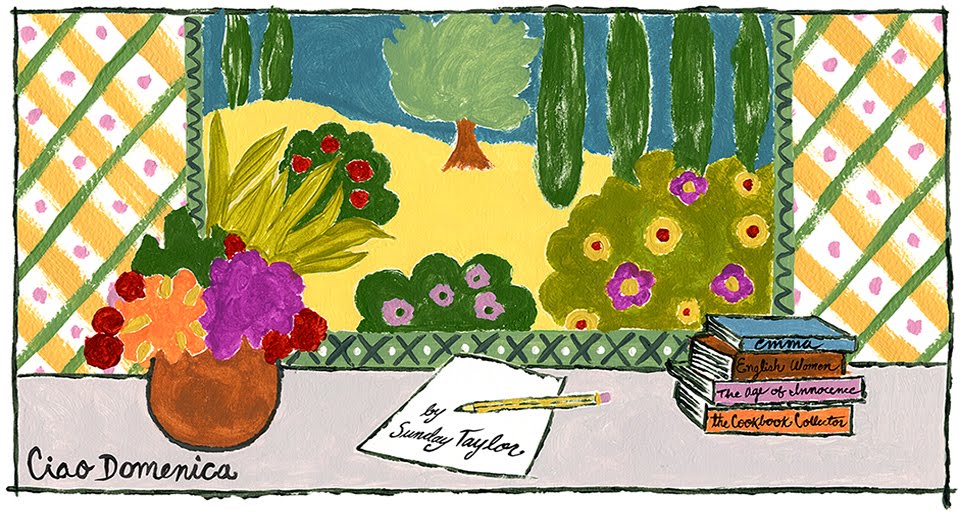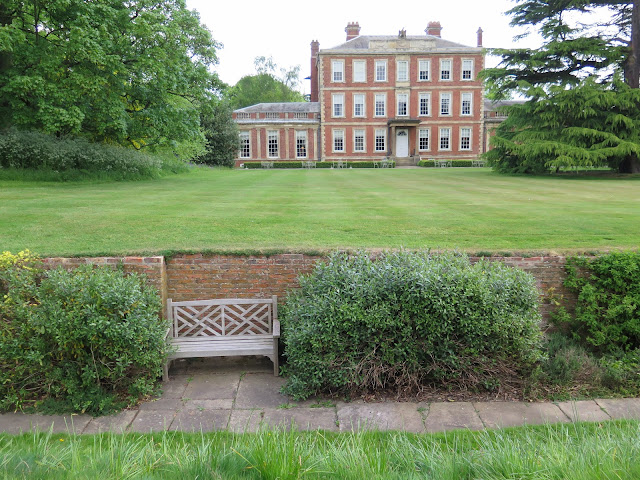Hello and happy holidays! It's hard to believe that Christmas is one week away. The holidays come around so quickly each year and I am occasionally filled with anxiety at the prospect of all the work. Some years I contemplate not getting a tree or putting the lights on the outside of the house. But each time I suggest these ideas to my family they look at me as if I am possibly losing my mind. And I must say that every year something magical happens to shake me out of my lethargy. This year it was the simple act of writing my Christmas cards. Last week I sat at the kitchen table and wrote messages to friends I don't see very often. Some of them are childhood or college friends that live far away. Others are newer friends, some through the world of blogging, that I also don't see very often. But the simple act of writing a meaningful message to each of them on a festive holiday card contained a powerful emotional charge. When I took my cards to the post office, I walked away with a spring in my step, a lightness of heart, and a renewed enthusiasm for the holidays.
Christmas classics
People get into the holiday spirit in different ways. Many people take out their favorite Christmas classics to get them in the mood. Books such as Truman Capote's A Christmas Memory, Charles Dickens' A Christmas Carol and Louisa May Alcott's Little Women. There are so many great Christmas stories. But what I find myself doing is pulling down my favorite cookbooks, the ones that contain the festive foods of the season. In fact, there is no more comforting sight than a stack of these cheerful books on the kitchen table with a notepad and cup of coffee by their side. It's a sight that says it's time to fill the kitchen with Christmas foods. These are the treasured ones I use every year. First of all, the recipes are tried and true. And second, the well-thumbed and food-splattered pages remind me of Christmases in the past and always make me smile. They are books I can easily sit down and read from cover to cover. They contain beautiful images of holiday decor as well as wonderful recipes. Looking at them each year makes me nostalgic and happy to be celebrating another Christmas. With Christmas only a week away I have already made many of these recipes. Here are a few of my favorite holiday cookbooks:
This book will inspire you to give a cookie exchange party. I did one for years and I have to tell you it was so much fun. In fact, I just may bring it back. Guests would arrive in festive spirits with two dozen home-baked cookies, the cookie recipe, and an empty platter. Conversations about recipes were a great ice breaker. We ate a dinner of comfort foods such as Chicken Pot Pie or Boeuf Bourguignon (both recipes from Barefoot Contessa). Mulled Cider with winter spices simmered on the stove. When it was time to leave guests would fill up their platter with cookies and take home an impressive dessert to serve for the holidays.
As you can see this Bon Appetit cookbook has many post-its indicating favorite recipes I have used over the years. One of my favorites is Mixed Green Salad with Oranges, Dried Cranberries and Pecans which makes a wonderful first course for Christmas dinner. Go here for the recipe. This book also includes my favorite recipe for Hot Mulled Cider with Winter Spices. Go here.
Another Bon Appetit cookbook reflects a bygone era of many good recipes as well as party ideas. For example, there is a cozy supper for welcoming Carolers to your home. I remember Carolers going from door to door in my neighborhood when I was a child. Does this even happen anymore? I'm not sure but it's comforting to remember a time when it did. The menu for this party is: Smoky Split Pea And Root Vegetable Soup served with Cheddar-Dill Scones. Go here for the soup recipe. And here for the scones. I've made them both many times and they are delicious.
This book is filled with great fruit desserts and all the flavors of the season. The title says it all. These cobblers and crisps are perfect for cold days in December. One of my favorites is Apple and Blackberry Crumble.
Of course, Nigella is the queen of cozy and her Christmas book is filled so many good ideas. My favorite is her Sticky Gingerbread which I made last week for my family's tree trimming party.
It fills the house with the most delicious aroma and is probably the most evocative food of the season
This cookbook contains many great party ideas including an Italian Christmas Eve, Fireside Cocktail Party, A New England Christmas, and a Snow Country Breakfast. This one has me dreaming of old-fashioned holidays on the east coast and plotting new party ideas for next year.
And then there are the magazine and newspaper articles torn out over the years. This one is from Town and Country UK and includes several great recipes for Hot Toddies and such. This year the Brit in me decided to serve Hot Toddies for my family's Tree Trimming Party. I bought Kentucky Bourbon and added hot water, lemon juice and honey. Served in a mug with a cinnamon stick, it took me back to a Dickensian world where I imagined escaping from the cold into a cozy London tavern. It's simple to do and the results are delicious. Put the following into each glass or mug:
2 Tablespoons Kentucky Bourbon
1 Tablespoon Honey
2 tsp. lemon juice
1/4 cup of hot water
Stir and garnish with a cinnamon stick and lemon zest
And speaking of iconic British dishes I have always wanted to make Boxing Day Sausage Rolls and this year I finally did it. They are easy to make if you use Frozen Puff Pastry. Go here.
These were a hit at my tree trimming party which seemed to be turning into a British pub menu!
If you want to journey back to a Dickensian world, here are two new cookbooks that look enticing. From what I've read they contain many recipes that would work well for the holidays.
What could be more perfect than recipes inspired by the life and work of Charles Dickens? Did you know that A Christmas Carol was published on this day in 1843? Dickens wrote it in six weeks and the first edition sold out by New Year's Day. People lined up at Hatchard's Bookshop to purchase it. I learned this wonderful detail from the new film "The Man Who Invented Christmas."
Fortnum & Mason, the venerable food department store on Piccadilly in London, has been selling delectable provisions for the holidays since the 1700's. Now we can learn how to make some of their iconic dishes.
And one more... this cookbook has gotten very good reviews and sounds perfect for all your baking needs.
I haven't bought it yet, though I did make the Flourless Cocoa Cookies sprinkled with Sea Salt that was printed in the New York Times. They were delicious! Go to the New York Times for the recipe.
Wishing you a week of delicious and festive cooking!




































































